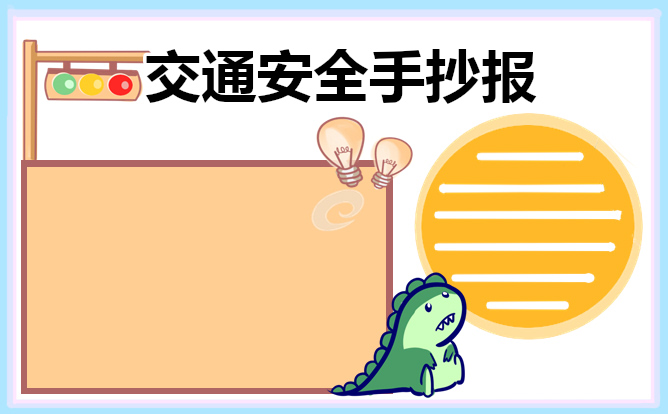仁爱9年级上册英语教学设计
仁爱9年级上册英语教学设计5篇
《仁爱版英语》是由北京市仁爱教育研究所于2002年3月依据《英语课程标准》在教育部成功立项、依据《英语课程标准》编写、于2003年9月第一次送教育部审查就获得通过的英语教材。下面是小编为大家整理的仁爱9年级上册英语教学设计5篇,希望大家能有所收获!
仁爱9年级上册英语教学设计1
一、学情分析:
从整体情况来看,九年级一、二班学生英语基础较差,优生有几个,后进生也较多,导致两极分化严重。我对学生学习情况和学生性格都比较理解,这样更容易调整教学方法,更容易走进学生的内心。有一部分男生比较懒散,学习不太主动,书写很差,希望在这最后一年初中生活中,有所改变。
二、教材分析:
九年级英语采用人教版新目标英语,是改版后的第一次使用。九年级共安排有十四个单元,上学期完成十二个单元。各单元话题灵活有趣,贴近学生生活实际。本册书将学习的一些语法知识点有:宾语从句,被动语态,情态动词,定语从句,等。同时每个单元都增加了文化背景知识和学习策略,并增加了任务型学习成分与语篇输入,提供了一篇具有跨文化内容的阅读文章及相关的练习,用以训练学生的阅读能力,扩大学生的阅读量。
九年级英语是人民教育出版社出版的新目标英语,本册书依然是分为SectionA、SectionB、Self-check,其中A部分为新课呈现,B部分为拓展延伸,教材编排有以下目的:
1、要使学生受到听、说、读、写、英语的训练,掌握最基础的语言知识和语言技能以及培养初步援用英语交际的能力;养成良好的外语学习习惯,掌握学习外语的基本方法;为进一步学习和运用英语打下扎实的基础。
2、使学生明确学习英语的目的性
3、培养初步运用英语交际的能力和自学能力。
三、本学期的指导思想:
要面向全体学生,关注每个学生的情感,激发他们学习英语的兴趣,帮助他们建立学习的成就感和自信心,培养创新精神;整体设计目标,体现灵活开放,目标设计以学生技能,语言知识,情感态度,学习策略和文化意识的发展为基础;突出学生主体,尊重个体差异;采用活动途径,倡导体验参与,即采用任务型的教学模式,让学生在老师的指导下通过感知、体验、实践、参与和合作等方式,实现任务的目标,感受成功;注重过程评价,促进学生发展,建立能激励学生学习兴趣和自主学习能力发展的评价体系。总之,让学生在使用英语中学习英语,让学生成为Good User而不仅仅是Learner。让英语成为学生学习生活中最实用的工具而非累赘,让他们在使用和学习英语的过程中,体味到轻松和成功的快乐,而不是无尽的担忧和恐惧。
四、教学任务与教学目标:
根据国家教委颁发的《九年制义务教育全日制初级中学英语教学大纲》。通过训练学生的听、说、读、写,使学生掌握最基本的语言知识和语言技能,从而培养学生初步运用英语进行交际的能力;寓教于乐,使学生养成良好的外语学习习惯,为将来的学习打下坚实的基础。
以教材为载体,密切结合教材,在课堂上努力创设各种情景夯实语言知识及语言技能,从而激发学生主动学习英语的兴趣,提高学生的记忆、观察、思维及想象能力,为学生的终身学习奠定基础。
五、教学措施:
1、依据学生基本情况,逐步激励学生对英语产生学习兴趣。
2、重视课堂教学质量,逐步提高学生英语交际能力。
3、有意识培养学生听力、表述、朗读、书写和作业的基本能力。
4、重视思维过程系统编排,由浅入深,由易到难,由已知到未知,循序渐进,点面结合,逐步扩展,循环往现,以加深影响。
六、教学方式与学习方式的设想:
1、教学应面向全体学生,注重对学生进行运用英语能力的培养,力争人人都有进步;
2、对学生因材实教,尊重学生个体差异,力争让不同学生全面发展;
3、采用“任务型”活动教学,鼓励学生参与体验与交流,力争让学生增强对英语的学习兴趣;
4、充分利用课堂作业与课外作业,严格要求学生抓好落实,强化所学,力争让每位学生皆有所获。
七、渗透德育的总体构想:
1、认真钻研教材和课标,利用备课组的集体智慧精心备课,明确每堂课的基础内容和拓展内容,满足不同层次学生的不同需求,做到上好每一堂课。
2、充分利用多媒体教学设备,加强直观教学,提高课堂教学效率。
3、课后多与学生沟通,了解学生学情,及时得到反馈信息,以利于改进教学中存在的问题和不足。
4、在课堂上积极开展丰富多彩的英语活动,提高学生兴趣。如英语演讲比赛、单词听写比赛、朗读比赛、英语句子接龙比赛、唱英文歌曲等。
5、课后加强个别辅导与答疑,做好培优补差。
6、不断学习,加强自身素质和业务能力的提高。
仁爱9年级上册英语教学设计2
一、指导思想
以“英语课程标准”为宗旨,适应新课程改革的需要,面向全体学生,提高学生的人文素养,增强实践能力和创新精神。正确把握英语学科特点,积极倡导合作探究的学习方式。培养学生[此文转于]积极地情感态度和正确的人生价值观,提高学生综合素质为学生全面发展和终身发展奠定基础。
二、英语教学总目标
努力提高特优率、高分率、及格率和得分率。提高学生记忆单词和词汇短语的能力,改变学生对阅读的恐惧感,从最简单的短文练起。让学生能听懂教师对有关熟悉话题的陈述并能参与讨论。能读懂七至八年级学生阅读的简单读物和报纸杂志,克服生词障碍,理解大意。能根据阅读目的运用适当的阅读策略。能与他人合作,解决问题并报告结果,共同完成学习任务。能在学习中互相帮助,克服困难。能合理计划和安排学习任务,积极探索适合自己的学习方法。在学习和日常交际中能注意到中外文化的差异。
三.教材简要分析
《新目标英语》九年级(全一册),全书共有十五个单元,本教材各单元话题灵活,贴近生活实际。本册书将学习到的一些语法知识点有:被动语态、过去完成时态、情态动词、宾语从句、定语从句和构词法等。同时每个单元A和B部分都提供了一篇阅读文章,用以训练学生的阅读能力,扩大学生的阅读量。
四、学情简要分析
本人担任初三年级一个教学班,共有学生人数__人。通过初中两年的英语学习,大多数学生已能听懂有关熟悉话题的语段和简短的故事。能与教师或同学就熟悉的话题交换信息。能读懂短篇故事,能写便条和简单的书信。但由于各种因素的影响,学生发展参差不齐。有两极分化现象,有少数学生因为基础不够好,学习很吃力而自暴自弃,有的因此扰乱课堂纪律,这给教学带来不少困难。
五、提高教学质量(此文来自)的可行措施及教改措施
一)、面向全体学生,注重素质教育。
二)、以学生为主体,尊重学生个体差异。
仁爱9年级上册英语教学设计3
一、指导思想:
1、在教学过程(本文来自)中要面向全体学生,激发他们学习英语的兴趣,帮助他们建立学习的成就感和自信心,使他们在学习过程中发展综合语言运用能力,提高人文素养,增强实践能力,并培养他们的创新精神;
2、突出学生主体,尊重个体差异,让学生在老师的指导下构建知识,提高技能,活跃思维,展现个性,发展心智,拓展视野。
3.、不仅注重知识目标的实现,更要在教学过程中注重实现能力目标,注重学生的情感、态度和价值观的培养。
4、在教学过程中采用自主学习方式,充分发挥学生的主观能动性。
二、教材分析:
本套教材采用任务型语言教学模式,融汇话题、交际功能和语言结构,形成了一套循序渐进的生活化的学习程序。本册书对原书的结构与内容作了适当的调整,增加了复习单元、文化背景知识和学习策略等部分,并增加了任务型学习成份和语篇输入。本书每个单元都列出明确的语言目标、主要的功能项目与语法结构、需要掌握的基本词汇,并分为A和B部分。A部分是基本的语言内容,B部分是知识的扩展和综合的语言运用。每个单元还附有Self Check 部分,学生可用来自我检测本单元所学的语言知识。
教学目的:
1.要使学生受到听、说、读、写的训练,掌握最基础的语言知识和语言技能以及培养初步运用英语交际的能力;养成良好的外语学习习惯,掌握学习外语的基本方法;为进一步学习和运用英语打下扎实的基础。
2.使学生明确学习英语的目的性,
3.培养初步运用英语交际的能力和自学能力。
具体目标:
针对实际情况,我制定了以下二方面的教学目标:
1.语言技能:
听:
(1)能听懂课文大致内容;
(2)能抓住简单语段中的观点;
说:
(1)能使用恰当的语调和节奏表达课文大意;
(2)能经过准备就一般话题作短暂表达
读:
(1)能理解阅读材料中不同的观点和态度;
(2)能识别不同文体的特征;
(3)能通过分析句子结构理解难句和长句;
写:
(1)能简单写出连贯且结构较完整的句子,
(2)能默写课文;
(3)能在写作文中基本做到文体较规范、语句较通顺;
2.语言知识:
语音:
(1)逐步做到语音、语调自然、得体;
(2)根据语音辨别和书写不太熟悉的单词或简单语句。
词汇:
(1)运用词汇描述比较复杂的事物、行为和特征,说明概念等;
(2)尽可能学会使用规定的习惯用语或固定搭配。
语法:
(1)进一步掌握描述时间、地点、方位的表达方式;
(2)进一步理解、掌握比较人、物体及事物的表达方式;
(3)使用适当的语言形式进行描述和表达观点、态度、情感等;
(4)学习、掌握基本语篇知识并根据特定目的有效地组织信息。
三、学情分析:
今年的学生的基本情况较差,部分学生已经对英语失去了信心,还有一部分学生觉得英语越来越难,渐渐力不从心了,不感兴趣了,上课的注意力也不集中了,发言也不是很活跃。另外,学生在情感态度,学习策略方面还存在诸多需要进一步解决的问题。针对这种情况,教学的时候需要注意在备课中增加趣味性,以此来提高学生对英语学习的兴趣。同时,注意学生好的学习习惯的养成。
四、教学具体措施:
1、摸清学生基本情况,逐步激励学生对英语产生学习兴趣。
2、重视课堂教学质量逐步提高学生英语交际能力。
3、有意识培养学生听力、表述、朗读、书写和作业的基本能力。
4、重视思维过程系统编排,由浅入深,由易到难,由已知到未知,循序渐进,点面结合,逐步扩展,循环往现,以加深影响。
5、认真贯彻晨读制度:规定晨读内容,加强监督,保证晨读效果。
6、加强对学生学习策略的指导,为他们终身学习奠定基础。
仁爱9年级上册英语教学设计4
Section A(1a-2c)
学习目标
1.通过交流和表达,进一步掌握学习英语的技巧与方法。
2.掌握下列知识点:
■重点词汇:f1ashcard,vocabulary,pronunciation,a1oud
■重点短语:①study for②make flashcard③make vocabulary lists④ask the teacher for help
⑤read aloud ⑥study with a group
■重点句型:①How do you study for a test? ②What abou tlistening to tapes?
■语法:by+μing的用法
预习导学
预习单词,完成下列各词。
1.抽认卡
2.词汇
3.Aloud(近义词)
4.发音(名词)
5.ever(反义词)
6.1isten(现在分词)
7.study(过去分词)
8. (如何)do you study for a test?
合作研讨
一、重点单词与短语
1.pronunciation n.发音;发音法,其动词形式pronounce
【跟踪训练】
(1)她认识很多法语单词,但发音不正确。
She knows a lot of French;words,but them incorrectl.
2.Aloud adv.出声地;大声地
例如:read aloud大声朗读
【辨析】aloud/loud/loudly
aloud出声地;大声地。常与read,cail等动词连用,loud高声地;大声地;喧闹地。常用于talk,speak等动词之后;
loudly高声地;喧闹地。一般可以和10ud互换,但含有“吵闹”的意思。
【跟踪训练】
(2)老师要求我大声朗读课文。
The teacher asked me to the text .
(3)请大声点说,以便我能听清楚。
Please so that I can hear you clearly.
(4)不要这么大声说,婴儿在睡觉。
Don't so .The baby is sleeping.
3.asksb.for…向某人请求
例如:ask the teacher for help向老师请求帮助
(拓展)ask sb.to do sth.请求某人干某事
ask sb.not to do sth.请求某人不要干某事
【跟踪训练】
(5)他们向我求助,
They me help.
4.too... to...太……而不能……
【拓展】too...to...可以与so...that(如此……以至于……)或
Enough to do...(足够……以至于……)转换。
【跟踪训练】
(6)The problem is so difficult that I can’t work it out。
(同义句转换)
The problem is difficult work out.
5.a lot表示程度,作状语,意为“很;非常”
【拓展】a lot of=lots of许多;很多。修饰可数名词复数与不可数名词。
【跟踪训练】
(7)我有许多有趣的书。
I have interesting books.
二、重点句型与语法
■句型
What about reading a1oud to practice pronunciation?
通过大声朗读来练习发音怎么样?
【精解】What/How about...?
用来征求意见或询问有关情况,意为“……怎么样”,about后跟名词、代词或动名词。
【拓展】提建议的其他表达方式有:
(1)Let’s do... (2)Shall we do...?(3)Why don't you.../Why not do...?
(4)Would you mind doing...?(5)You should...(6)You’d better(not)do... •
【跟踪训练】
(8)出去散散步好吗?
going out for a walk?
(9)那个电视剧怎么样?
the TV play?
(10)我是北京人,你呢?
I am Beijinger. you?
■语法
“by+υing"短语
“by+υing"短语的含义是“通过……;凭借……”,其中by为介词,后面常接动名词短语,表示通过做某事而得到某种结果;在句中常用作方式状语,表示的方法、手段等比较抽象。
例如:The old woman makes a living by collecting and selling wastes.那个老妇人以收废品和卖废品谋生o
【跟踪训练】
(11)—How do you study English So well?
— reading 1ots of books。
A.To B.Of C.At D.By
当堂检测
Ⅰ. 用所给单词的适当形式填空
1.We study by (work)with a group.
2.It is agreat way (1earn)a 1anguage.
3.What about (read)a1oud (practice)pronunciation and intonation?
Ⅱ.根据汉语提示完成句子
4.Have you ever (和朋友一起练习对话)friends?
5.I study English (通过制作)f1ashcards.
6. (怎么样)1istening to tapes?
7.这个问题太难了,我理解不了。
It's hard me this question.
8.朗读能提高你的口语。
can your spoken English.
课后练习
1.根据句意及首字母提示完成单词
1.I can’t get the p of the word right.
2.Reading a in the morning is a good way to 1earn English well.
3.He 1earns English bymaking v 1ists。
4.Do you 1earn English by w English-1anguage videos?
5.I often listen to tapes to i my listening skills。
Ⅱ.阅读理解
ManyChinese students don’t paymach attention to(注意)spoken English at school.They think it necessary to practicespeaking English in class,but not out of class.Here is a story to show you how important it is to speak the Eng1ish language freely in daily life.A foreigner once got hungry and went into a restaurant in London.He sat down at a table.When the waiter came,he opened his mouth,put his nngers into it and took them out again in Order to express that he wanted something to eat forhe could not speak English.The waiter soon brought a cup of tea.The man shook(摇动)his head。The waiter then took away the tea and brought a cup of coffee.The man shook his head again.He tried again and again,but he wasn’t able to make the waiter understand him.Finally,nother man came in.He spoke English clearly and fluently.In a few minutes,there was a large plate of meat and vegetables on the table before him.
Sl you see a man often goes hungry if hedoesn’t master(掌握)a foreign language.
根据短文内容,判断下列句子正(T)误(F)
( )6.Chinese students pay little attention to spoken English.
( )7.The students only practice speaking English in class.
( )8.The story happened in a restaurant in New York.
( )9.The man wanted to eat something because he was hungry.
( )10.Another man spoke English very well.
仁爱9年级上册英语教学设计5
Unit 11 Could you please tell me where the restrooms are?
The First Period
Ⅰ. Teaching Aims and Demands
1. Knowledge Objects(1) Key Vocabulary: restroom, shampoo, stamp
(2) Target Language: Excuse me. Can you please tell me where I can get a dictionary?
Sure. There’s a bookstore on River Road.
2. Ability Objects: 1)Train students’ listening ability.
(2)Train students’ communicative competence.
Teaching Step 1: Revision
T: You’re new to this school. You need to know where the main office is.How can you ask where the main office is?
S1: Where’s the main office?
T: That’s one way to ask. But there is a more polite way you can ask. You can say, "Can you tell me where the main office is?" Class repeat. Can you tell me where the main office is?
Ss: Can you tell me where the main office is?
T: That’s correct. Now let’s say you want to know where Classroom 1 is. How can you ask?
S2: Can you tell me where Classroom 1 is?
T: Good! There’s another polite way you can ask: Could you tell me how to get to Classroom 1? Class repeat. Could you tell me how to get to Classroom 1?
Ss: Could you tell me how to get to Classroom 1?
T: That’s right. Very good.
Step Ⅱ 1a
Go through the instructions with the class.
Read the list of things to the class. To review the meaning of each item on the list, invite different students to say each phrase in their own words.
Point to the lettered parts of the picture one by one.
Ask a student: What kind of place is this?
What do they sell there? Do we have one in our community? What is the name of the one in our community?
Point out the sample answer. Say, The letter c is in front of the words buy shampoo because you could buy shampoo in a department store. There may be more than one correct answer for some blanks.
While students are working, move around the room offering help as necessary.
Step Ⅲ 1b
Read the instructions to students. Point out the two conversations that are shown in the picture.
As you listen, fill in the blanks with words you hear in the recording.
Play the recording the first time.Students only listen.
Play the recording a second time.This time ask them to fill in the blanks with the words you hear.
Check the answers with the whole class.
Step Ⅳ 1c
Read the instructions to the class.
Point out the list of things people need and the pictures of the places in activity 1a. Say. Look at activity la. Have a conversation with a partner. Ask your parter politely where you can do these thing and then answer your partner’s questions.
As students work, listen to some pairs in order to check the progress and help with pronunciation as needed.
After students have had a chance to practise several exchanges, ask some pairs to come to the front of the classroom and act out their conversations.
The Second Period
Ⅰ. Teaching Aims and Demands
1. Knowledge Objects: 1) Key Vocabulary: escalator, furniture, exchange money, elevator
(2) Target Language: Excuse me. Do you know where I can exchange money?
Sure. There’s a bank on the second floor. Take the escalator to the second floor and turn right. The bank is next to the bookstore.
2. Ability Objects
(1)Train students’ listening ability.
(2)Train students’ communicative competence.
3. Moral Objects
If someone asks you how to get to the place he wants to go to, you should tell him the way correctly.
Ⅱ. Teaching Key Points
1. Key Vocabulary
exchange money
2. Target Language
Excuse me. Do you know where I can exchange money?
Sure. There’s a bank on the second floor.
3. Structures
Do you know where I can buy shampoo?
Could you tell me how to get to the post office?
Can you please tell me where I can get a dictionary?
Ⅲ. Teaching Difficult Points
1. Indirect questions.
2. How to improve students’ listening ability.
Ⅳ.Teaching Procedures
Step Ⅰ Revision
Check homework.
Step Ⅱ 2a
Read the instructions and point to the list of directions.
Get students to name the items in the picture such as escalator, elevator, shoe store, and so on.
Play the recording. Students only listen.
Tell them that the picture may help them understand what they are hearing.
Play the recording again. This time ask students to write a number next to four of the directions.
Check the answers with the whole class.
Step Ⅲ 2b
Point to the picture. Say, now you will hear the recording again. This time show where the boy went as he followed the directions to the drug store. Draw a line on the picture in your book.
Play the recording again and ask students to draw the line on their own. Check the answer with the class.
Step Ⅳ 2c
Ask a pair of students to read the sample conversation aloud to the class.
Read the instructions aloud. Say. Make conversations using information about the places in the picture with your partners.
As students work, move around the classroom checking the progress of the pairs and offering help as needed.
Ask one or two pairs to say their conversations to the class. Ask the rest of the class to look at the picture as they listen.
Step Ⅴ Homework
Ask the students to write three sentences with the starters of the structures.
The Third Period
Ⅰ. Teaching Aims and Demands
1. Knowledge Objects: (1) Key Vocabulary
hang out, fresh, advantage, disadvantage, block
(2)Target Language: Go out the front door and take a right. Walk about three blocks. Go past the park, and turn left onto Oak Street.
3. Moral Objects
Anything has both advantages and disadvantages. We should treat everything correctly.
Ⅱ. Teaching Key Point
Train students’ listening, speaking, reading and writing ability.
Ⅲ. Teaching Difficult Points
How to improve students’ integrating skills.
Ⅳ. Teaching Procedures
Step Ⅰ Revision: T: Yesterday we learned the structures.
Do you know where…? Could you tell me how to get to…? Can you please tell me where…? Now who can make sentences by using the structures?
Step Ⅱ 3a
Read the instructions. Point out the blank lines under the words Advantages and Disadvantages below the interview.
You will write your answers in these blanks.
Read the first two sentences at the top of the article.
Explain that the interviewer will talk to several teenagers.
Get students to read the interview on their own quickly.
When they have finished, ask if there are any words or sentences they don’t understand. If there are, explain them.
Ask students to read the interview again and write the advantages and disadvantages. Check the answers with the whole class.
Step Ⅲ 3b
Read the instructions. Point out the conversation in the box and invite two students to read it to the class.
Point out the list of advantages and disadvantages in Activity 3a. Say, You can use these items and any other items you can think of as you talk about places you usually hang out.
Ask students to work in groups of four or five. As they work, move around the classroom helping the groups as necessary. Make sure they talk about both advantages and disadvantages.
Ask several groups to act out part of their conversation to the class.
Step Ⅳ 4
Read the instructions to the class. Get students to look back at the picture and activities on the first page of this unit.
Point out the sample language in the box. Invite a student to read it to the class.
Ask students to say the names of some stores and other places in the community and write them on the board. Say,
Each group can choose three of these places to write about, or you can choose another place you know of
Write careful directions from the school to each place, but do not say the name of the place. You can use the words this place instead. In order to help students work, draw a simple map showing the school and several nearby streets.
When the groups are ready, they read their directions to the class and the other students guess the name of the place they are talking about.
Step Ⅴ Homework
1. Ask students to choose two places in the community and write careful directions from the school to each place.
2. Finish off the exercises on pages 46~47 of the workbook.
The Fourth Period
Ⅰ. Teaching Aims and Demands: 1. Knowledge Objects(1)Key Vocabulary
fascinating, convenient, safe, restroom, inexpensive(2)Target Language
Can you tell me where there’s a good place to eat? Of course. What kind of food do you like?
2. Ability Objects
(1) Train students’ writing and speaking ability.
(2) Train students’ ability to understand the target language in spoken conversation.
(3) Train students’ ability to use the target language.
Ⅱ. Teaching Key Points 1. Key Vocabulary convenient, safe, restroom inexpensive
2. Target Language Can you tell me where there’s a good place to eat?
Of course. What kind of food do you like?
Ⅲ. Teaching Difficult Points
1. How to improve students’ writing and speaking ability.
2. How to use the target language.
Ⅳ. Teaching Procedures
Step Ⅰ Revision Check homework.
Step Ⅱ 1a Go through the instructions with the class.
Read the words in the box to the class and ask if there are any of these words that students don’t understand. If so, help students to explain the meaning of the word.
Then read the instructions again and point out the sample answer. Get a student to read the sample answer to the class. Point out that students can also write other words after the word clean.
Ask students to write words from the box in the blanks on their own. Help students if needed.
Correct the answers by having students read what qualities he or she listed.
Step Ⅲ 1b Read the instructions to the class.
Point out the example in the box. Invite two students to read it to the class.
Now work with a partner. Look at the words in the box and use them to talk about places in your own city. As students talk, move around the classroom checking their work. Offer language support as needed.
Invite several pairs of students to say their conversations to the class.
Step Ⅳ 2a
Point to the picture and ask students to tell what is happening. If necessary, explain that the scene shows a family on vacation. They are asking the man for information about various things to do in Sunville.
Go through the instructions and point to the chart.
Play the recording. Students only listen the first time.
Play the recording again. Ask students to write the places people ask about.
Check the answers with the whole class.
Step Ⅴ 2b
Read the instructions and point to the chart.
You will hear the same recording again.
This time listen carefully to the answers the cleck gives. Write the answers in the blanks alone.
Point out the sample answer.
Play the recording again. Ask students to write their answers in the blanks.
Check the answers.
Step Ⅵ 2c
Point to the sample conversation. Invite two students to read it to the class.
Read the instructions. Role play the conversations you hear on the tape.
Get students to work in pairs. Move around the room checking the progress of the pairs and offering help as needed.
Ask one or two pairs to say their conversations to the class.
Step ⅦHomework
Talk about some places using the words in la, then write down the conversations.





